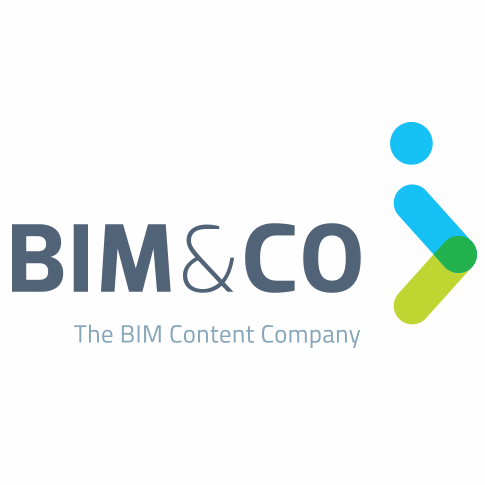BIM: A Driver of Profitability and High ROI in Construction

By combining digitization, collaboration, and data management, BIM has proven its potential to enhance the profitability of construction projects. Through cost controls, optimized planning, and efficiency gains, BIM offers unparalleled return on investment (ROI) for industry professionals.
In this article, we will explore how BIM has changed the game for construction and how you can optimize productivity for increased profitability in your projects.
BIM and Its Positive Impact
BIM has revolutionized the way construction is managed and executed. A comprehensive survey conducted by Becerik-Gerber and Rice highlighted key findings: 41% of respondents witnessed an overall increase in project profitability, while 55% reported that BIM helped reduce costs.
Even more astonishing, 50% of the latter claimed a 50% reduction in project costs. Furthermore, 58% of respondents reported a 50% reduction in the overall project duration. These statistics prove the significance of BIM in generating a higher return on investment for construction endeavors.
Let’s explore how BIM achieves these results:
Cost Control
Firstly, through real-time visualization of changes made to a project, associated costs can be immediately adjusted. For example, changing the materiality of a part of a building (such as transitioning from a brick façade to a glass façade) instantly updates material and implementation costs.
Improved Planning with BIM
Additionally, BIM provides a detailed project simulation, enabling better coordination among all stakeholders (engineers, architects, contractors). This reduces the risks of errors or overlaps that could lead to delays and additional costs.
During the construction of a building, for instance, a structural engineer could use BIM to ensure that electrical or plumbing conduits do not intersect structural elements like beams or columns. This prevents costly modifications during construction.
Accurate Material and Time Estimates
Thanks to BIM’s precision, material quantities can be precisely calculated. This reduces material wastage and ensuring the right amount is ordered from the start.
Take a concrete slab, for example. BIM can accurately calculate the amount of concrete needed, the number and size of reinforcements, and more. This means no material waste or additional costs for last-minute orders or unused surplus.
Enhanced Collaboration and Error Prevention
BIM, on the other hand, facilitates communication among different teams, allowing problems to be identified and resolved more quickly.
For instance, if the electrical design team and the mechanical design team are working on the same BIM model, they can easily see if, for example, an electrical conduit intersects with an air duct. Such errors, when discovered early through BIM, can be corrected before construction starts, avoiding field rectification costs.
The Crucial Importance of BIM for Positive ROI
According to a report by McGraw Hill, BIM delivers significant results in terms of return on investment. Among users of architectural BIM modeling, two-thirds reported a positive return on investment for their investments.
Even more impressive, 83% of BIM expert users achieved a positive return on investment, demonstrating BIM’s effectiveness in generating tangible results. Additionally, 93% of users firmly believe in the potential for future value gains through continued BIM usage.
These testimonies reinforce the idea that BIM is an invaluable tool for increasing profitability and ensuring long-term success in the construction industry.
Nuance: Quickly Generating ROI by Implementing BIM
While it is true that BIM offers significant potential for generating high return on investment in construction, it is important to qualify these results. Digital modeling allows for the extraction of analytical data to better understand asset value and improve long-term operational expenses.
A study by Trimble shows that BIM can reduce operating expenses by 10 to 15% while enhancing asset knowledge and increasing its valuation. However, opting for BIM entails initial implementation costs, software purchases, team training, and adjustments to work methods. Therefore, it is essential to consider these factors when making a decision.
Nevertheless, after an adaptation period, studies show a significant increase in productivity, allowing initial costs to be recouped in a few years. Furthermore, BIM can also generate additional business opportunities, further increasing ROI over the long term.
Enhanced Efficiency with Onfly from BIM&CO
To further improve BIM efficiency and optimize digital construction projects, Onfly from BIM&CO offers a powerful solution. By significantly reducing the time spent searching for and adding BIM objects to projects, Onfly enables professionals to focus better on planning and design.
By optimizing project quality through better BIM content management, this cloud solution helps reduce risks and potential errors. According to internal data, using Onfly has resulted in an estimated savings of 104 hours of work per user per year. With quick and efficient searching, Onfly makes it easy to find and integrate the necessary BIM objects. Thus enhancing overall project productivity.
BIM and Onfly: A Winning Combination for Optimal Profitability
BIM has clearly demonstrated its potential to generate high ROI in construction through cost controls, improved planning, and productivity enhancements. However, it is essential to keep in mind that ROI is not instant but gradually develops over the long term.
While choosing to implement BIM involves initial costs, these investments quickly pay off by increasing efficiency and creating additional business opportunities. To maximize the benefits of BIM, the use of Onfly from BIM&CO optimizes BIM content management. It also accelerates searches, and improves project quality.
Thus, with BIM and Onfly in tandem, construction professionals are equipped to maximize their profitability and achieve peak efficiency in their field.
+ Post an article












